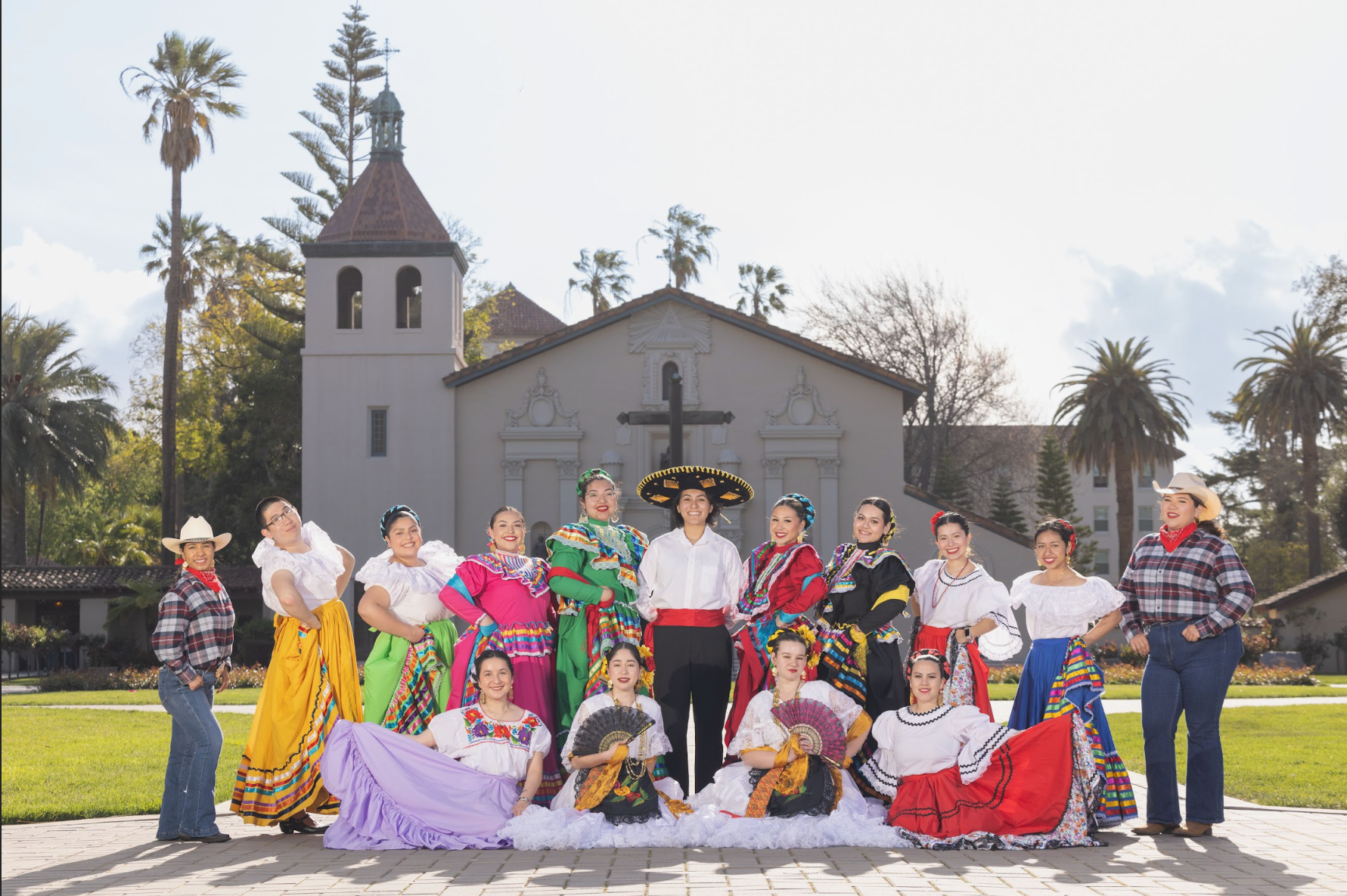Skirts and Steps: An Interview with Maria Tobar ’27
Folklórico Dancers. Photo provided by Lizbeth Ornelas
This interview has been edited for length and clarity.
The Multicultural Center continued its streak of stunning club performances this past weekend. Ballet Folklórico hosted its second annual cultural show, titled “Colores de Mi Tierra” or “Colors of my Land,” on Saturday, April 26. The student organization is dedicated to showcasing the beauty of Mexican culture through Mexican folk dancing called folklórico. Maria Tobar ’27, the organization’s treasurer, spoke about her time in Ballet Folklórico and how it’s been pivotal in shaping her college and dance career.
Brendan Phillips: “How has your experience been with Ballet Folklórico?”
Maria Tober: “It’s honestly been amazing, I am on board this year as the treasurer. It’s been a great opportunity for me to grow in confidence not only as a person but also as a dancer. For me it’s great because not all of us are professional dancers at all and it’s a great way for us to get together, work out for two hours, learn new dances and really appreciate Mexican culture by learning more about footwork and skirtwork.”
Folklórico dancing has had a rich history in North America, initially spawning in Mexico with the arrival of the Spanish in 1517. When Spanish conquistadors attempted to replace local indigenous customs with their own, the two cultures blended to create various dance styles that differed across regions. Soon, the culture was brought into the U.S., and today it has found its way into schools throughout California. Each different style is defined by variations of complex footwork and skirtwork. Dancers use the toes, heels, soles and the balls of their feet to stomp rhythmic patterns that match the beat of the background music. They also use different lengths and manipulations of uniquely designed skirts to either match or oppose the direction of their feet.
Folklórico’s deep ties to Mexican culture allow dancers to celebrate their heritage and learn more about historical influences. The intricacies of each dance require strict preparation and dancers spend many hours in collaboration learning to perfect their craft. Dancers are able to learn new techniques from each other, ultimately creating a sense of unity and closeness within the group.
“How do you guys go about your practices?”
“Usually on Sundays, we practice for two hours. Now, depending on what region you are performing for the cultural show, you usually have one day a week where you practice for one to two hours as well,” she said.
Because of the multitude of influences that have merged to create folklórico, there are tons of different styles that are unique to separate regions. Two of the principal styles are danza, spawning from traditional indigenous tribes in Mexico and danza sincrética, which mixes danza with the influences arriving from Spain, France, Germany and Italy. Beyond these are bailes regionales, which are different styles that are unique to various regions throughout Mexico.
“Are there certain specialists that are teaching the group or are you all learning the dances together?”
“It depends. One of our co-chairs, Maya Díaz ’25, has practically been dancing since she was born and our other chair, Isabella Estrada ’25, began dancing folklórico here and takes classes outside as well, so both of them have the most experience. Most of our club members are starting here at Santa Clara,” she said.
The student organization is one of many on campus giving students an opportunity to celebrate and learn about their individual cultures, while also sharing them with the rest of the student body through cultural shows and events. Last year, Ballet Folklórico was able to host its first-ever solo cultural show in the Locatelli Student Activity Center.
“How did last year’s event go?”
“For it being the first time, it was really cool. We sold out in a couple of hours which was insane. A lot of SCU students came—like all seats in Locatelli were filled!” she said. “People were standing up during the performances because there was nowhere to sit. It was just amazing seeing all the community support.”
With such a huge success in their first solo outing, members of the organization were extremely grateful to see so much support from their peers. Their gratitude has been shown through their endless and diligent preparation for this weekend. This time around Tobar hopes to see an even better turnout.
“What’s your expectation for the event?”
“I hope a lot of people come. All of our families and friends are supporting us,” she said “We’re doing all new dances so it’s really just showing our skills and everything we’ve been learning. Come check out culture show! It’s gonna be amazing.”
